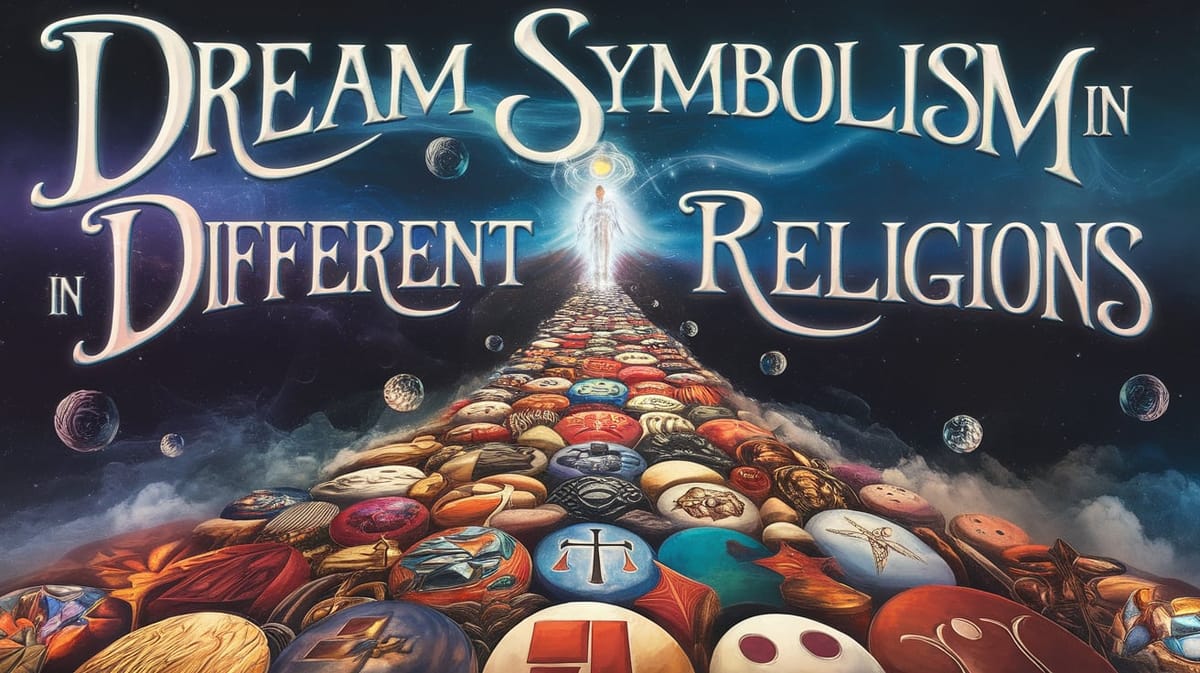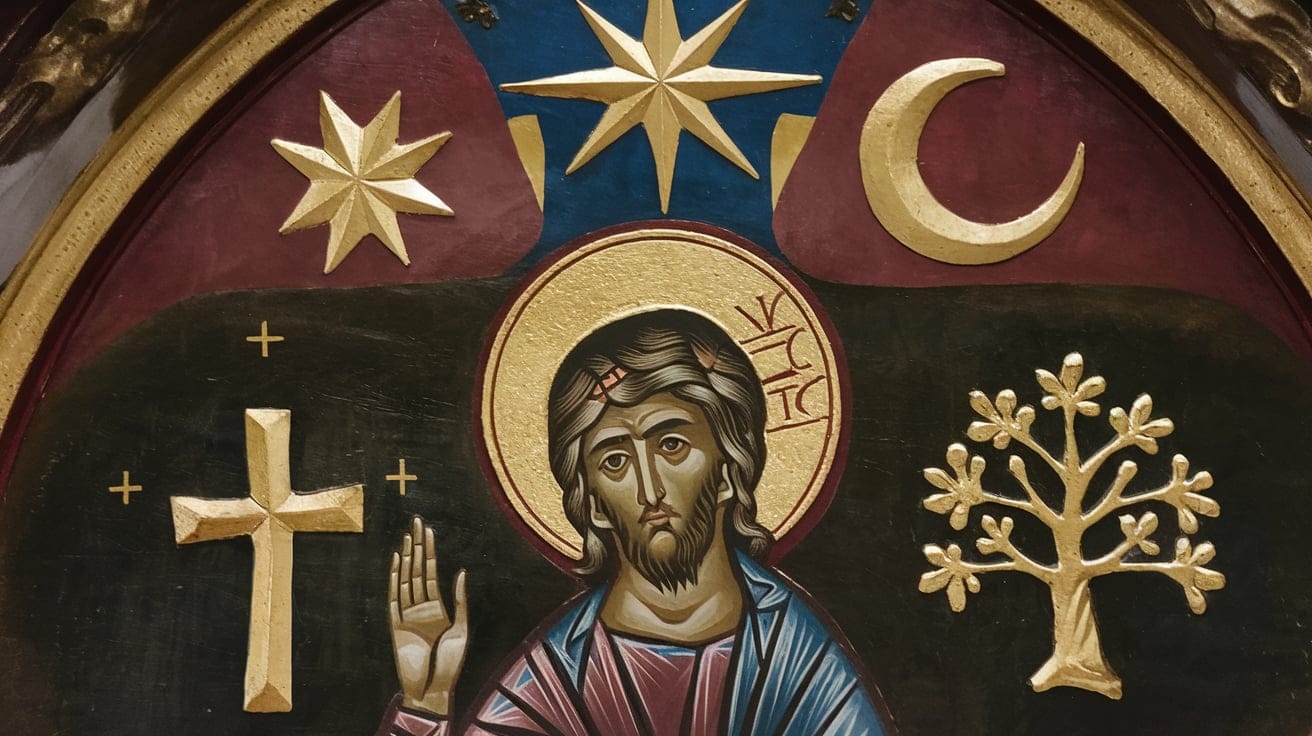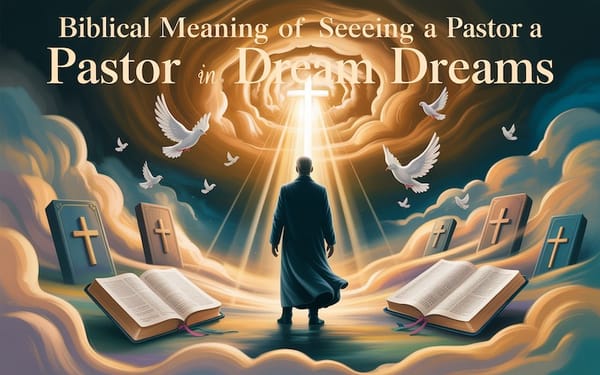Dream Symbolism in Different Religions: A Mystical Journey

In the quiet stillness of night, the mind weaves narratives filled with enigmatic symbols and eternal mysteries. One such profound narrative is the Understanding of religious symbolism in dreams. These dreams transcend mere personal reveries, reaching into the collective consciousness shaped by millennia of religious doctrine and spiritual practice. They are not mere fancy; rather, they are significant cultural touchstones, standing as testament to humanity’s quest for meaning amidst the divine.
Dreams permeated with religious symbols have been reported across diverse cultures and epochs, often leaving the dreamer with a sense of awe—or perhaps—discomfort. The profound essence of religious symbols in dreams reveals deep-seated beliefs and offers guidance drawn from sacred traditions worldwide. By embarking on this journey of understanding, we stand on the threshold of a rich tapestry woven with universal truths and individual insights.
What do they really mean? Let’s explore the symbolic, psychological, and scientific interpretations of this intriguing dream.
The Symbolic and Spiritual Significance of Understanding Religious Symbolism
The world of dreams serves as a bridge between the conscious mind and the deeper, often neglected, spiritual aspect of our existence. When the understanding of religious symbolism surfaces in dreams, these symbols act as vessels, carrying messages from the subconscious that are genuinely universal and deeply personal.

Symbols like the cross in Christianity, the lotus in Buddhism, or the crescent moon in Islam carry profound spiritual significance. These images serve as beacons, urging the dreamer to contemplate divine truths or to reassess their own beliefs. The cross, for example, may symbolize themes of sacrifice and redemption, compelling the dreamer to confront aspects of their life where personal sacrifice is necessary for spiritual growth. A lotus, on the other hand, may signify purity and enlightenment, suggesting a period of personal transformation or awakening is on the horizon.
The presence of religious symbols often hints at the undercurrents of mystery in our lives, inviting us to explore our intuitive selves. They urge a delicate psychological balance, challenging the dreamer to harness the independence of their mind while respecting the spiritual mandates of their faith.
What Do Different Understanding Religious Symbolism Scenarios Mean?
Encountering a Sacred Text
Dreaming of sacred texts, like the Bible, Quran, or Vedas, may reflect the dreamer’s search for answers or a moral compass. If the dreamer is reading these texts fluently, it suggests a burgeoning understanding or acceptance of their spiritual path. Conversely, struggling to read or comprehend the text hints at confusion or a need for guidance in waking life.
Seeing a Religious Figure
Encountering figures such as Jesus, Buddha, or a Prophet can denote a call to embrace virtues exemplified by these spiritual leaders. These dreams might indicate periods of moral testing or signify a moment of salvation or enlightenment.

Participating in a Ritual
If the dreamer finds themselves participating in a religious ritual, it could imply a desire for community and belonging. Such dreams often arise during transitions, signifying a need to find one’s place within the spiritual narrative.
You can check our dream interpret if you wonder scientific studies on a dreams.
Psychological Interpretations of Understanding Religious Symbolism
The great psychologists offer distinct lenses through which to interpret these dreams:
Freudian Perspective
Sigmund Freud would suggest that dreams of religious symbols are manifestations of repressed desires. Much like Oedipal urges, religious dreams could represent the tension between carnal and spiritual instincts, showcasing an internal struggle to align one's primal nature with societal expectations.
Jungian Perspective
Carl Jung offers a more spiritually integrated approach, viewing these symbols as integral parts of the collective unconscious. Jung believed these symbols arise to guide the individual toward self-realization and to connect with archetypes that exhibit universal human experiences.
Reiki Perspective
Reiki practitioners might interpret such dreams in terms of energy flows or blocks within the chakras. A symbol like a serpent, common in Hinduism, could represent the awakening of kundalini energy, suggesting that the dreamer is undergoing a significant spiritual improvement.
Common Causes and Factors Behind Understanding Religious Symbolism
Several factors might trigger these symbolic dreams:

- Stress and Anxiety: Life’s pressures often lead to seeking solace in spiritual wisdom, manifesting as religious dreams.
- Significant Life Changes: Transition periods might drive the subconscious to seek guidance from religious tenets.
- Health Anxieties: Fears related to health and mortality can elicit dreams packed with religious symbolism, especially regarding afterlife and salvation.
- Feelings of Loss or Jealousy: These dreams may act as a reminder of eternal truths, fostering healing or envy resolution.
- Unresolved Conflicts: Tensions at work or home can emerge in dreams, interpreted as a need for spiritual reconciliation or redemption.
Scientific Explanations for Understanding Religious Symbolism in Dreams
From a scientific standpoint, several frameworks may account for these dream phenomena:
- Neurological Factors: fluctuations in neurochemical activity during REM sleep phase might spontaneously activate religious images stored in memory.
- Physical Sensations: Body position or discomfort during sleep triggers dreams, and the brain potentially uses religious imagery to make sense of these sensations.
- Sleep Disturbances: Interruptions in sleep cycles can heighten emotional intensity in dreams, potentially steering them toward highly symbolic religious narratives.
Coping Strategies for Understanding Religious Symbolism in Dreams
Addressing such dreams thoughtfully can harness their potential for psychological and spiritual growth. Here are some strategies:
- Dream Journaling: Document dreams to uncover recurrent symbols or patterns, facilitating deeper insights.
- Reflective Meditation or Prayer: Engaging in meditation or prayer post-dream can help in aligning with the guidance these symbols provide.
- Professional Counseling: Therapists trained in dream analysis can offer valuable perspective, especially when dreams evoke distress.
- Stress Management Techniques: Practices such as yoga or mindfulness can reduce anxiety and promote healthier sleep cycles.
- Spiritual Practices: Exploring or revisiting religious readings or community participation could provide comfort and clearer understanding.
Summary & Final Thoughts
The exploration of understanding religious symbolism in dreams offers a captivating crossroad, guiding us toward self-discovery and spiritual evolution. These dreams, carrying messages from both personal psyche and the collective unconscious, offer a map to navigate our waking lives.
By acknowledging their rich tapestry of meanings, we unlock avenues for profound introspection and transformation. Next time you encounter a dream laden with sacred symbols, pause and reflect. What truths might they whisper across the chamber of your mind? Delight in these celestial messages—from the divine, to the dream, to the self.
Together, let us embrace the ancient wisdom and illumination veiled within dreams, unfolding at the crossroads of heart and mind.
FAQ about Understanding Religious Symbolism in Dreams
What is the spiritual meaning of religious symbols in dreams?
Religious symbols in dreams convey messages from the subconscious, blending universal truths with personal insights. They encourage contemplation of divine truths, spiritual growth, and introspection about one’s beliefs and the deeper mysteries of life.
How do cultural symbols like the cross or lotus appear in dreams, and what do they signify?
Symbols like the cross may represent themes of sacrifice and redemption, while the lotus can signify purity and enlightenment. These symbols encourage the dreamer to confront necessary personal sacrifices or embrace a transformational awakening, respectively.
What does it mean to dream of encountering a sacred text?
Encountering a sacred text like the Bible or Quran in a dream may reflect a search for moral guidance or deeper spiritual understanding. Successfully reading these texts suggests acceptance of one's spiritual path, while difficulty implies confusion or a need for direction.
How can seeing a religious figure in a dream be interpreted?
Seeing a figure such as Jesus or Buddha signifies a call to embody the virtues they represent. Such dreams hint at moral testing or the promise of salvation and enlightenment.
What is the psychological interpretation of religious symbolism in dreams according to Freud and Jung?
Freud viewed religious symbols as manifestations of repressed desires or internal struggles between primal and spiritual instincts. Jung, however, saw these symbols as part of the collective unconscious, guiding individuals towards self-realization and connecting with universal archetypes.
Can changes in life circumstances cause dreams filled with religious symbolism?
Yes, significant life changes or stressors such as health anxieties or unresolved personal conflicts can trigger dreams filled with religious symbolism. They serve as reminders of eternal truths or aid in psychological reconciliation.
Are there scientific explanations for dreaming of religious symbols?
Scientific explanations include neurochemical activity during REM sleep that might activate religious imagery, physical sensations during sleep being interpreted in religious terms, or heightened emotions leading to symbolic dreams during sleep disturbances.
What coping strategies can be effective for dealing with religious symbolism in dreams?
Coping strategies include dream journaling to recognize patterns, engaging in reflective meditation or prayer, seeking guidance from professionals trained in dream analysis, applying stress management techniques, and participating in spiritual practices to gain comfort and understanding.
How can understanding religious symbolism in dreams lead to personal growth?
Understanding these symbols encourages self-discovery and spiritual evolution, offering avenues for introspection and transformation. Acknowledging their meanings can aid in navigating both spiritual and waking life challenges.
Why is it important to reflect on dreams with religious symbols?
Reflecting on these dreams reveals their deep spiritual and psychological messages, helping individuals align with both personal and collective unconscious insights, thus fostering personal and spiritual growth. They serve as celestial guides from divine insights to self-awareness.




